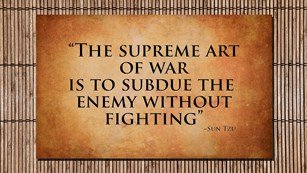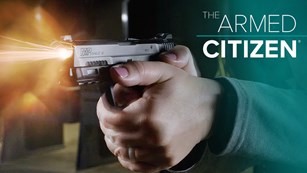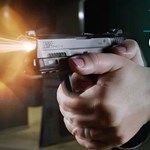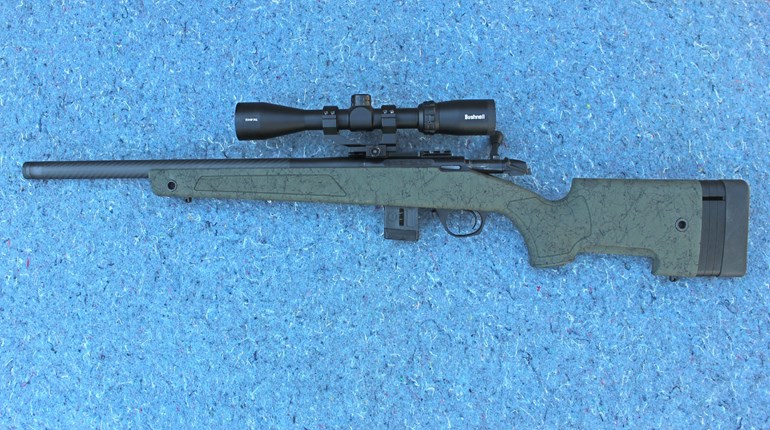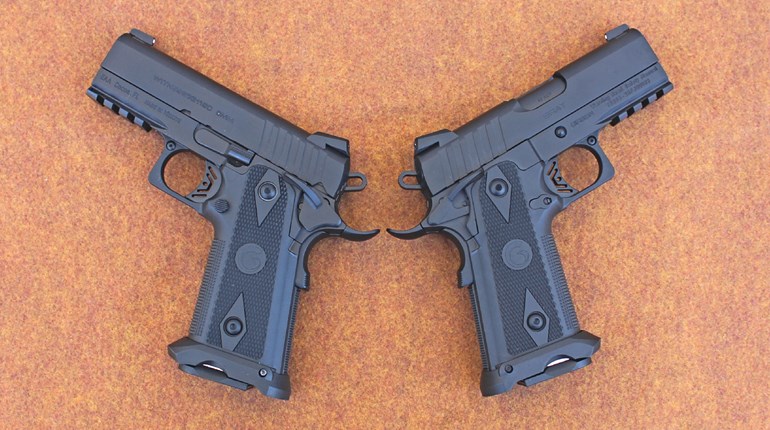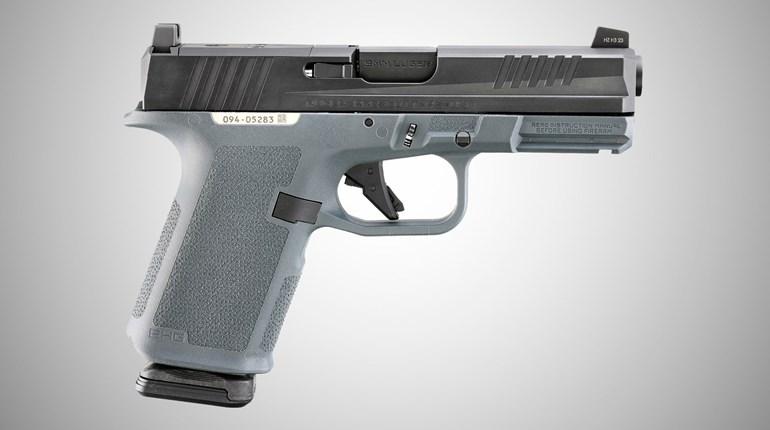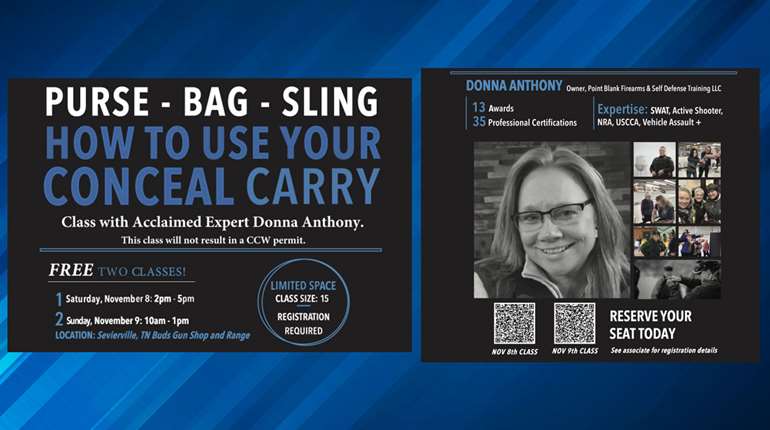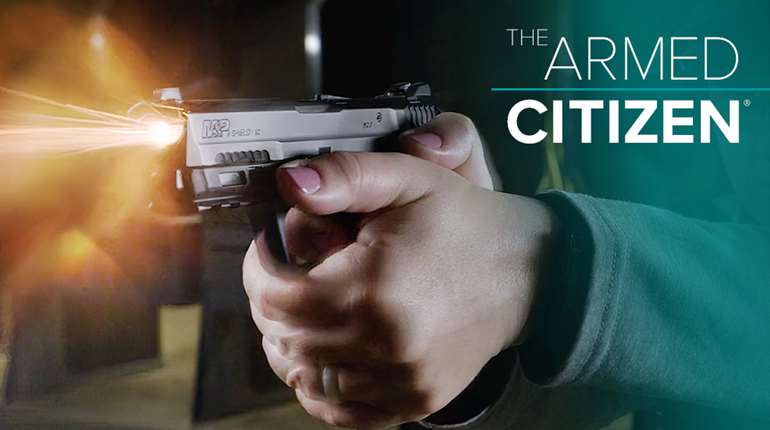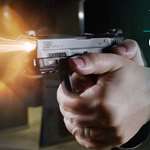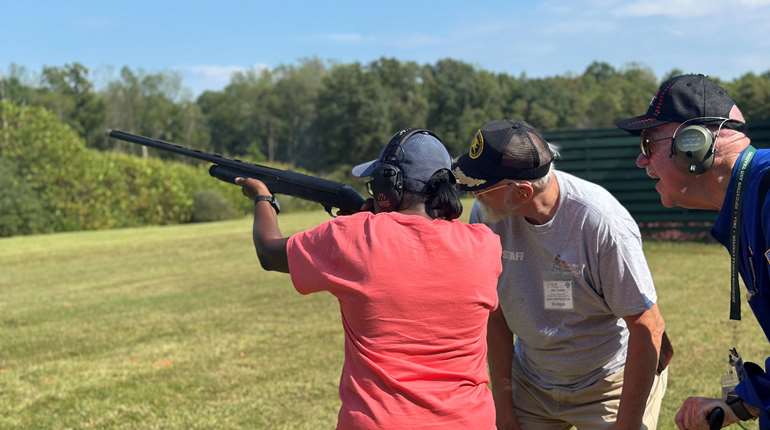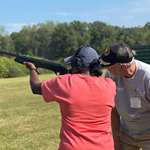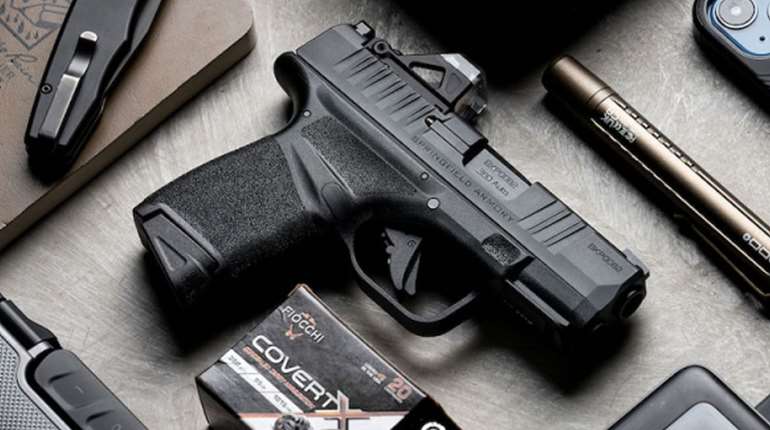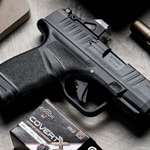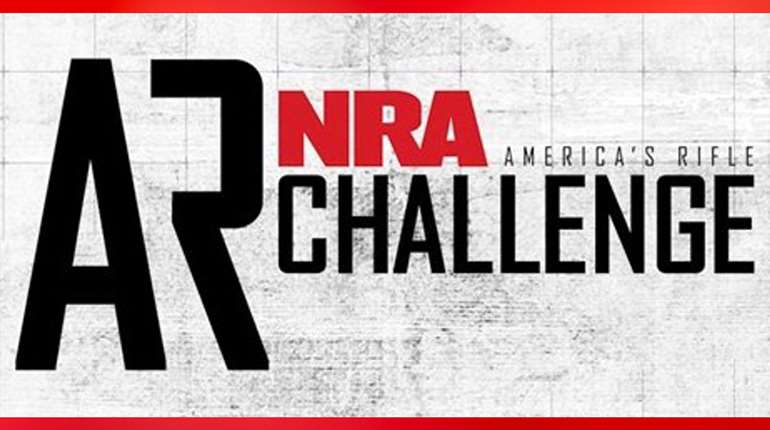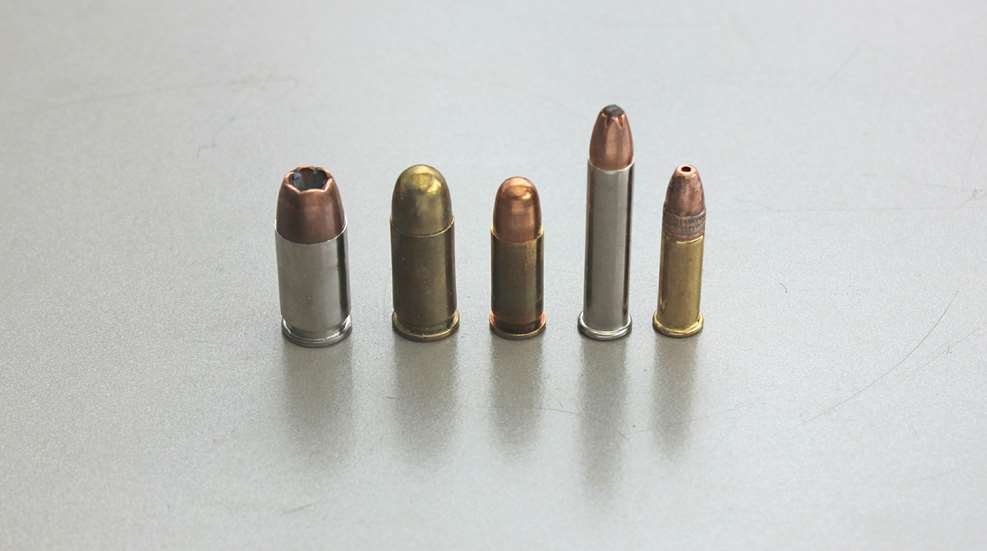
When I became a serious student of defensive handguns 30 years ago, the party line for selecting a defensive semi-automatic pistol caliber went something like this: Carry the largest caliber you can manage and practice with. The .45 ACP or .40 S&W are best but if you need something with less recoil you can squeak by with a 9 mm. Calibers smaller than 9 mm should be avoided.
Today, we've seen a paradigm shift in the caliber selection process. If new shooters go to a defensive handgun class they are most likely to be told that a 9 mm pistol is the best way to go. This is due to advances in bullet technologies, smaller polymer pistols that hold more ammunition and more ammunition performance data than we’ve had in the past. Research shows that when properly loaded with quality hollow points, a 9 mm pistol is enough gun without the need for the increased levels of felt recoil, more expensive ammunition or the reduced ammunition capacities associated with carrying a pistol chambered in .45 ACP or a .40 S&W.
But even though the 9 mm is a well-balanced and affordably priced cartridge with a broad selection of pistols from which to choose, it's still not the ideal fit for everyone. There are those who, due to age, injury, shooting experience levels or personal preferences, are looking for defensive pistols that generate even less felt recoil than a 9 mm. One option is to purchase a larger, heavier 9 mm pistol with the added weight of a steel frame. The other is to keep the pistol about the same size but shoot less powerful cartridges from it.
This conversation covers option two, namely, reduced-recoil sub-caliber pistol cartridges that are either popular or relatively easy to find here in the United States. I could have sliced this information in a few different ways, but I think the least confusing order for those who are new to shooting is a walk-through by cartridge caliber, or bullet sizes, not performance potential. As you'll see, there is not always a direct correlation between bullet mass and performance, or, just how hard bullets hit their intended targets.

From left: 9 mm, .380 ACP, .32 ACP, .25 ACP, .22 Mag. and .22 LR.
A Quick Note Regarding Hollowpoint Bullets
Before wading into the sub-calibers, it's important to take a moment to discuss how hollowpoint bullets work. This type of expanding bullet has become the standard for law enforcement and civilian defense. But they are not always the best option for sub-caliber handguns.
Hollow points, which have open or polyfilled cavities at the front end, open up or “mushroom” when they strike their intended target. This flattening out of the nose of the bullet has notable advantages over round-nose or non-expanding bullets. It increases the bullet's diameter which in turn increases the damage to the target. In short, it makes a bigger hole. It also causes the bullet to shed, or “dump,” its kinetic energy much more quickly. This has the dual effect of greater tissue disruption and a significantly increased likelihood that the bullet will stop moving inside of the intended target rather than over-penetrating, or passing all the way through, the target to hit something or someone else.
However, hollow points rely on bullet velocity to expand properly. If they are traveling too slowly, the bullet may only partially expand or not expand at all. In these cases, the unexpanded hollow point will behave much like a non-expanding bullet resulting in less target disruption and deeper penetration.
This is one of the reasons that sub-caliber pistols have been, and continue to be, considered by many experts to be less than optimal for self-defense. Some of the cartridges discussed here do not develop enough velocity for reliable hollow point expansion when fired from concealed-carry size pistols. And in some cases, older pistols may not feed hollow points reliably. In both these cases, the pistol owner will need to use non-expanding round nose bullets. Although these loads are not as disruptive to the target, they can still penetrate to FBI recommended depths, depending on the gun and ammunition used. I'll touch on what to expect from hollowpoint ammunition with each caliber.
.380 ACP
This popular pocket pistol cartridge was designed by John Moses Browning, of .45-caliber 1911 pistol fame, for the Colt 1908 hammerless semi-automatic pistol. Also known as the 9×17mm and 9mm Kurz, the .380 ACP fires the same 0.355-cal. bullet as the 9 mm Parabellum (the same round we call the 9 mm here in the U.S.) which was developed in 1901. But the .380 ACP (short for Automatic Colt Pistol) fires lighter bullets in the 68-gr. to 100-gr. weight range from a shorter cartridge case and at notably slower velocities than the 9 mm.

Defensive hollow points for .380 ACP pistols have improved over the years to provide more reliable expansion.
Thanks to the .380 ACP pocket pistol craze driven by the release of the Ruger LCP in the late 2000s, there is a good selection of reliable and effective hollowpoint loads available in this caliber. When fired from tiny pocket pistols like the LCP, this caliber can be fairly snappy in the felt recoil department. However, shooting .380 ACP from compact-size, double-stack pistols like the Ruger Security-380 and SCCY CPX-3RD makes for a noticeably softer shooting combination than similarly sized pistols chambered in 9 mm.

The soft-shooting Ruger Security-380 pistol offers a useful balance of defensive features, compact size and ammunition capacity.
.32 ACP
The .32 ACP (also short for Automatic Colt Pistol) is an earlier creation by John Browning. Developed in 1899 for FN (Fabrique Nationale), this cartridge launches 0.312-caliber bullets with typical weights between 60 grains to 73 grains. When it hit the market it became a popular option for its day, with FN producing over half a million pistols in this caliber between 1899 and 1909. It found its way into other successful semi-automatics including the Colt Model 1903 Pocket Hammerless, Savage Model 1907 and the Browning Model 1910. It was adopted for military, law enforcement and civilian use worldwide.

The .32 ACP is not nearly as popular as it was a few decades ago
Although the .32 ACP enjoyed a brief revival as a pocket pistol round from 1985 to 1999, it has mostly fallen out of production. This is unfortunate from a low-recoil option point of view. While it has never been a powerhouse, this is a time tested center-fire round. It’s comfortable to shoot from pocket pistols, like the KelTec P32, with mild levels of recoil when fired from compact-size pistols such as the Beretta 81 Cheetah.

Compact .32 ACP pistols like the Beretta Cheetah 81 are soft shooting but no longer in production.
Given a modern ballistics makeover like the .380 ACP received a few years ago, it could be a solid soft-shooting option. But considering the current lack of consumer enthusiasm, it’s unlikely it will make a comeback. For those who do have access to a .32 ACP pistol, barrel length is going to play a big role in determining ammunition effectiveness. Barrels 4" or longer can develop enough velocity for proper hollow-point expansion while rounds fired from shorter barrels in the 3" range will likely be traveling too slowly to mushroom on impact. For smaller .32s, heavier round-nose bullets like the Fiocchi 73-gr. full-metal jacket can generate more effective levels of penetration.
.25 ACP
I've included the .25 ACP on this list because a conversation about American sub-caliber cartridges would not be complete without it. This, the smallest of the center-fire options, is also the brainchild of John Browning. It came to market in 1905 alongside the Fabrique Nationale M1905 “vest pocket” pistol.
The .25 ACP's claim to fame is that it has been chambered in some of the smallest commercial semi-automatics ever made, including the top-quality Belgian Baby Browning shown here. Firing a 0.251-caliber bullet usually weighing somewhere around 35 to 50-gr., its small size and low operating pressures made it one of the preferred cartridges for a variety of inexpensive pocket pistols of dubious quality better known as “Saturday Night Specials.”

The center-fire .25 ACP is physically larger and more reliable but the rimfire .22 LR can hit harder when fired from subcompact pistols with the right ammunition.
Today, only a few .25-caliber pistols are still in production and the relatively limited ammunition available for it currently costs as much or more than 9 mm. Similarly sized .22 LR pistols are much less expensive to shoot and pocket pistols chambered in .32 ACP or larger calibers are significantly more powerful.

Pocket pistols like the Baby Browning sacrificed performance in favor of being as small as possible.
The only reason to consider a .25 ACP for personal protection these days is if it's a whatchagot gun, meaning, the only gun you have at hand. If so, conduct some serious online research to verify that it is a reliable, well-made model like the Browning and Beretta models. If it proves to be a pot-metal plinker, then don't use it as a defensive firearm. As for ammunition, a well made non-expanding bullet is probably your best bet for reliable operation and generating more effective levels of penetration. But just like other watchagot defensive options, it should be replaced with something better as soon as possible.
.22 Mag. (.22 WMR)
The .22 WMR (Winchester Magnum Rifle) rimfire sporting cartridge, also known as the .22 Mag., has been on the market since 1959. It has been favored as a varmint and small game hunting round for use in rifles and revolvers since it was launched. It offers more down-range power than a .22 LR when firing similar bullet weights. It's also had a quiet, but consistent, following among snub-nose revolver fans.

Ammunition manufacturers now offer defensive handgun loads for .22 Mag. pistols
But it's only been over the last two or three years that we've seen enough semi-automatic pistols come to market to consider them a “class” of defensive pistols. These full-size pistols sport popular defensive handgun features with magazine capacities of 15- to 30-rounds. We recently posted a write-up about the veracity of .22 Mag. semi-automatics pistols as defensive options here.

Full-size .22 Mag. pistols are more potent than .22 LR pistol with similar levels of felt recoil.
.22 LR
Pistols chambered in .22 LR ever have been, and probably ever will be, a controversial choice for personal protection. Let's hit the positive qualities first.
These are the softest shooting semi-automatics, regardless of the pistol's size, and chambered for some of the least expensive ammunition available. Compact and pocket sized semi-automatic pistols chambered for .22 LR are affordable as well with prices hovering around $300. Recently we've seen polymer-framed models come to market with increased magazine capacities including the KelTec P17 and Taurus TX22, both of which can hold up to 16+1 rounds. Those who own .22 LR pistols tend to shoot them on a regular basis and use them in the field which can contribute to more precise shot placement in a pinch.

Among the most popular cartridges in the United States, the .22 LR is soft-shooting, inexpensive and readily available.
However, when fired from pistol-length barrels, the .22 LR cartridge can come up short in two key defensive handgun qualities: reliability and performance. Semi-automatic .22 LR pistols are notoriously finicky eaters and tend to jam more often than center-fire handguns. And even after testing and verifying the most reliable loads for a given pistol, rimfire cartridges are more likely to have primer failures (clicks instead of bangs) than center-fire primers.
And no matter how you slice it, the .22 LR pistols are among the most anemic of the sub-caliber options as the following performance information will show. Is a .22 LR pistol better than a sharp stick in a gun fight? Yes. And can a .22 LR save your life in a dire situation? Certainly! But folks who are considering this softest-shooting defensive option need to do so with an understanding of its limitations and plan accordingly.

Although they have their place, .22 LR pocket pistols are among the least-powerful defensive options available.
Sub-Caliber Performance Comparison
Just how much of a difference is there between 9 mm pistols and the sub calibers? Using range results from handguns that I’ve tested over the years, let's use 9 mm fired from compact and subcompact pistol barrels as the baseline for performance comparison. It’s worth noting that with handguns that have barrels shorter than 4", even small reductions of half an inch in barrel length can have an effect on bullet energy:
Caliber Barrel Length Muzzle Energy Test Gun
_____________________________________________________________________________________
9 mm 4.00" Barrel: 282 to 355 ft.-lbs. (Girsan MC28)
9 mm 3.67" Barrel: 294 to 343 ft.-lbs. (S&W M&P 9 Shield EZ )
.380 ACP 3.54" Barrel: 140 to 180 ft.-lbs. (Walther CCP M2)
.380 ACP 2.75" Barrel: 153 to 179 ft.-lbs. (Ruger LCP Max)
.32 ACP 3.82" Barrel: 136 to 179 ft.-lbs. (Beretta 81 Cheetah)
.32 ACP 2.70" Barrel: 91 to 112 ft.-lbs. (KelTec P32)
.25 ACP 2.40" Barrel: 60 to 72 ft.-lbs. (Beretta Bobcat 21A)
.22 Mag. 4.35" Barrel: 152 to 178 ft.-lbs. (S&W M&P 22 Mag.)
.22 Mag. 2.00" Revolver: 98 to 116 ft.-lbs. (Taurus 942)
.22 LR 4.00" Barrel: 79 to 113 ft.-lbs. (Taurus TX22)
.22 LR 2.75" Barrel: 67 to 73 ft.-lbs. (Ruger LCP II)
Based on this limited set of range results, the hardest hitting .380 ACP gun and ammunition combination yielded bullet energy levels about 100 ft.-lbs. below that of the least powerful 9 mm results. This is why compact-size .380s kick noticeably less than comparably sized 9 mm handguns. But with the right ammunition the .380 can still produce reliable bullet expansion. Of the low-recoil options, the double-stack .380 ACP compacts currently provide the best balance of reduced recoil and ammunition performance.
In regard to the .22-cal. rimfires, the .22 Mag. offers a tangible boost in bullet energy with a negligible increase in recoil when compared to the .22 LR. But it takes a 4” barrel semi-automatic pistol to gain this advantage. When firing .22 Mag from a snub-nose revolver, the bullet energy potential is similar to that of a 4” .22 LR pistol.
One of the reasons I wanted to write this article is that most folks don’t know about the bullet energy overlap between the pocket-sized .380 ACP, the compact-size .32 ACP and the full size .22 Mag. pistol. They all perform within a comparable bullet energy range. With .32 ACP compact pistols all but extinct, the 4” .22 Mag. pistols look to be the next most potent option with less recoil than a .380 ACP. For those who need a significant reduction in recoil, this can be helpful in deciding which option to go with.
Parting Shots: A Few Words of Advice
Although opinions of what is the “best” defensive pistol caliber have shifted over the years, two pieces of decades old self-defense advice still hold true today.
First, shoot the largest caliber of ammunition that you can safely manage and practice with regularly. If you can handle a 9 mm, then use a 9 mm pistol. With the variety of guns available, 9 mm ammunition prices are often lower than those of the centerfire sub-calibers and double-stack magazine capacities are hard to beat. The price tags attached to many polymer-framed 9 mm semi-automatics are affordable as well. If you need to go with a smaller caliber to manage recoil, then do so. But I highly recommend spending some time at the range shooting a 9 mm pistol or two before making that decision.
Secondly, and perhaps more importantly, shot placement is paramount with any defensive handgun. Whatever caliber you choose, practice with it on a regular basis so that you can consistently hit what you are aiming at. And be prepared both mentally and physically (with additional ammunition) to make follow-up shots if needed.
Finally, discussing which caliber is best is an empty exercise if folks won't use the guns they have because it hurts to shoot them. A less effective caliber is not the same thing as an ineffective caliber. There are simply too many instances of sub-caliber handguns successfully stopping threats to dismiss them out of hand. Do your homework, find the gun and ammunition combination that best fits your needs and then learn how best to use them.






